SUN TZU

A N EW T RANSLATION BY
M ICHAEL N YLAN
THE
ART
OF
WAR

C ONTENTS
CHAPTER 1
F IRST C ALCULATIONS 
CHAPTER 2
I NITIATING B ATTLE 
CHAPTER 3
P LANNING AN A TTACK 
CHAPTER 4
F ORMS TO P ERCEIVE 
CHAPTER 5
T HE D ISPOSITION OF P OWER 
CHAPTER 6
W EAK AND S TRONG 
CHAPTER 7
C ONTENDING A RMIES 
CHAPTER 8
N INE C ONTINGENCIES 
CHAPTER 9
F IELDING THE A RMY 
CHAPTER 10
C ONFORMATIONS OF THE L AND 
CHAPTER 11
N INE K INDS OF G ROUND 
CHAPTER 12
A TTACKS WITH F IRE 
CHAPTER 13
U SING S PIES 
A NYONE TAKING UP A BOOK like The Art of War ( Sunzi, or, in one romanization, Sun Tzu )wonders who wrote it, what is it good for, and how do we understand it now, so many centuries after it was compiled? This brief introduction to the Norton translation tries to answer those basic questions in four short sections, probing the problem of The Art of War s ultimate message to readers today.
W HO WROTE T HE A RT OF W AR ?
By the experts current understanding, all early Chinese texts are composite texts, texts compiled over time from impressive rhetoric ascribed to certain authors, often on vague impressions and little or no evidence. The Art of War ( Sunzi bingfa  ) is no exception to this general rule. Compiled in the last century or so of the Zhanguo period (475221 BCE), the work doubtless represents insights garnered over long centuries by different hands, possibly even by experts operating in different locations. That said, up to today, later writers, whether commentators or not, have generally accepted the same long-standing tradition: that The Art of War text was compiled by Sunzi (Sun Wu
) is no exception to this general rule. Compiled in the last century or so of the Zhanguo period (475221 BCE), the work doubtless represents insights garnered over long centuries by different hands, possibly even by experts operating in different locations. That said, up to today, later writers, whether commentators or not, have generally accepted the same long-standing tradition: that The Art of War text was compiled by Sunzi (Sun Wu  , or Sun Tzu), who served the king of Wu
, or Sun Tzu), who served the king of Wu  in the late sixth century BCE. However gratifying this tale, it cannot be verified at this remove, and indeed is unlikely to be true.
in the late sixth century BCE. However gratifying this tale, it cannot be verified at this remove, and indeed is unlikely to be true.
Although a Sunzi (Master Sun) makes a brief appearance in the Lshi chunqiu  (compiled ca. 238 BCE), Sun Wu, the legendary general to whom The Art of War is ascribed, does not appear on record before Sima Qians Historical Records or Shiji (compiled ca. 90 BCE) composes a biography for him. (An excavated manuscript from around the same time as the Shiji bears witness to Sun Wus immense fame as military master, however.) Before the second century of Western Han rule, then, the Sun Wu legend is nearly complete: this Sunzi is the advisor who persuaded King Helu of Wu to adopt a new mode of warfare, deploying mass infantry troops rather than nobles in four-horse chariotsa method credited with gaining Helus stunning victory over his neighbor, mighty Chu, in 506 BCE. Sunzis method and tactics are summarized in Sima Qians biography in one memorable scene where Sunzi drills 180 of the kings concubines in the new tight battle formations he envisions, and dares to behead two of them who disobey his orders. Having persuaded the palace women that they should follow him through heaven and earth, he goes on to lead the men of Wu by similar methods to an easy defeat of Wu's rival.
(compiled ca. 238 BCE), Sun Wu, the legendary general to whom The Art of War is ascribed, does not appear on record before Sima Qians Historical Records or Shiji (compiled ca. 90 BCE) composes a biography for him. (An excavated manuscript from around the same time as the Shiji bears witness to Sun Wus immense fame as military master, however.) Before the second century of Western Han rule, then, the Sun Wu legend is nearly complete: this Sunzi is the advisor who persuaded King Helu of Wu to adopt a new mode of warfare, deploying mass infantry troops rather than nobles in four-horse chariotsa method credited with gaining Helus stunning victory over his neighbor, mighty Chu, in 506 BCE. Sunzis method and tactics are summarized in Sima Qians biography in one memorable scene where Sunzi drills 180 of the kings concubines in the new tight battle formations he envisions, and dares to behead two of them who disobey his orders. Having persuaded the palace women that they should follow him through heaven and earth, he goes on to lead the men of Wu by similar methods to an easy defeat of Wu's rival.
The problem is this: that Sun Wu alone, in stark contrast to such heroes as Wu Zixu and Pang Juan, does not figure in any of the early masterworks that lovingly detail the complex maneuvers of the southern kingdom of Wu. For this reason, scholars since the twelfth century have repeatedly queried the historicity of the Sunzi narrative. The doubters have explored a range of explanations for the anomaly: (1) that Sun Wu never existed, and he is no more than a doppelgnger for Wu Zixu; (2) that Sun Bin, a better-attested general working 150 years later for Qi, needed a respectable forebear, and so a Sun Wu (Sun the Martial) was devised to fill that role by a person or persons unknown; (3) that Sun Wu, whether he existed or not, is credited with the same characteristics as all other military geniuses in the story cycles; and (4) that listeners and readers well versed in the rhetoric of high cultural learning within manuscript culture freely invented and adapted usable pasts to any pressing matters at hand.
There is an old joke among classicists: The Iliad was not written by Homer, but by somebody else with the same name. This saying could be easily adapted to apply to The Art of War ascribed to Sunzi, as moderns today have no access to more biographical material about this master than we find in passages of fairly late date. Unless one can prove that the Sunzi who wrote The Art of War is the same general Sunzi who drilled the kings concubines and won the Battle of Boju, then the text might as well be compiled by somebody else with the same name. That said, the Western Han stories about Sunzi reveal the presumption that people at the court of the time entertained about the residents of the far-distant southeastern coast of China: that they were prepared to use any ruthless methods when fighting, since they had little awareness or appreciation of the elaborate ritual code that in theory restricted the honorable courses of action open to the high-ranking officers on the North China plain. Yet these same officers frequent resort to expedient alliances in the centuries leading up to unification by Qin in 221 BCE, coupled with their frank admiration for the professionalism shown by the dare to die soldiers drawn from the ranks of the commoners, soon challenged and complicated earlier notions of aristocratic honor throughout the territory we call China today.
Next page
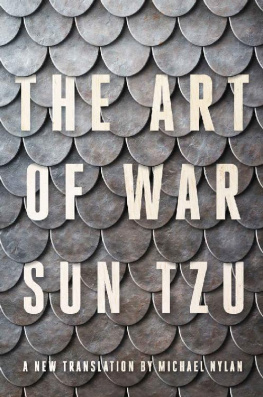
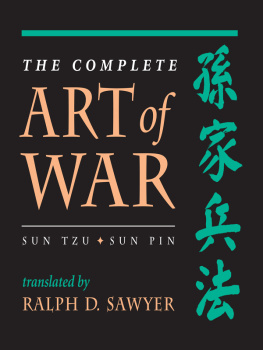


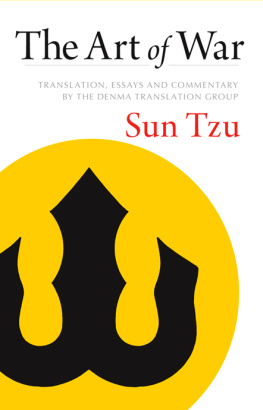
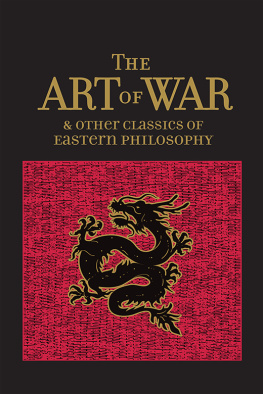



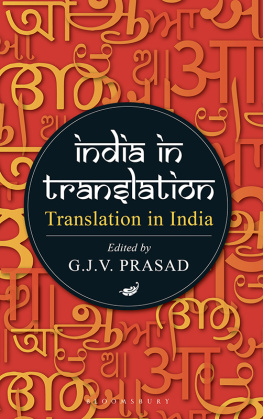




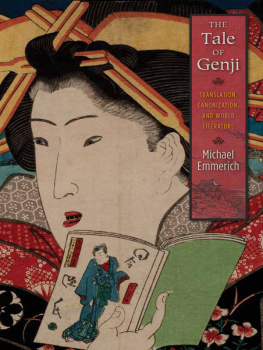















 ) is no exception to this general rule. Compiled in the last century or so of the Zhanguo period (475221 BCE), the work doubtless represents insights garnered over long centuries by different hands, possibly even by experts operating in different locations. That said, up to today, later writers, whether commentators or not, have generally accepted the same long-standing tradition: that The Art of War text was compiled by Sunzi (Sun Wu
) is no exception to this general rule. Compiled in the last century or so of the Zhanguo period (475221 BCE), the work doubtless represents insights garnered over long centuries by different hands, possibly even by experts operating in different locations. That said, up to today, later writers, whether commentators or not, have generally accepted the same long-standing tradition: that The Art of War text was compiled by Sunzi (Sun Wu  , or Sun Tzu), who served the king of Wu
, or Sun Tzu), who served the king of Wu  in the late sixth century BCE. However gratifying this tale, it cannot be verified at this remove, and indeed is unlikely to be true.
in the late sixth century BCE. However gratifying this tale, it cannot be verified at this remove, and indeed is unlikely to be true. (compiled ca. 238 BCE), Sun Wu, the legendary general to whom The Art of War is ascribed, does not appear on record before Sima Qians Historical Records or Shiji (compiled ca. 90 BCE) composes a biography for him. (An excavated manuscript from around the same time as the Shiji bears witness to Sun Wus immense fame as military master, however.) Before the second century of Western Han rule, then, the Sun Wu legend is nearly complete: this Sunzi is the advisor who persuaded King Helu of Wu to adopt a new mode of warfare, deploying mass infantry troops rather than nobles in four-horse chariotsa method credited with gaining Helus stunning victory over his neighbor, mighty Chu, in 506 BCE. Sunzis method and tactics are summarized in Sima Qians biography in one memorable scene where Sunzi drills 180 of the kings concubines in the new tight battle formations he envisions, and dares to behead two of them who disobey his orders. Having persuaded the palace women that they should follow him through heaven and earth, he goes on to lead the men of Wu by similar methods to an easy defeat of Wu's rival.
(compiled ca. 238 BCE), Sun Wu, the legendary general to whom The Art of War is ascribed, does not appear on record before Sima Qians Historical Records or Shiji (compiled ca. 90 BCE) composes a biography for him. (An excavated manuscript from around the same time as the Shiji bears witness to Sun Wus immense fame as military master, however.) Before the second century of Western Han rule, then, the Sun Wu legend is nearly complete: this Sunzi is the advisor who persuaded King Helu of Wu to adopt a new mode of warfare, deploying mass infantry troops rather than nobles in four-horse chariotsa method credited with gaining Helus stunning victory over his neighbor, mighty Chu, in 506 BCE. Sunzis method and tactics are summarized in Sima Qians biography in one memorable scene where Sunzi drills 180 of the kings concubines in the new tight battle formations he envisions, and dares to behead two of them who disobey his orders. Having persuaded the palace women that they should follow him through heaven and earth, he goes on to lead the men of Wu by similar methods to an easy defeat of Wu's rival.